In Virtual Reality and Mixed Reality News
October 11, 2022 – Meta has today unveiled the Meta Quest Pro at Meta Connect 2022, the company’s annual conference focused on all things augmented and virtual reality (AR/VR).
The Meta Quest Pro is the first entry in Meta’s new line of high-end devices, and comes with several innovative features, including high-resolution sensors for mixed reality (MR) experiences, LCD displays, a completely new design, plus eye tracking and Natural Facial Expressions to help users’ avatars reflect them more naturally in VR.
The device is available for pre-order starting today and will be available for purchase on October 25 for USD $1,499.99. For this price, buyers will receive the Meta Quest Pro headset, Meta Quest Touch Pro controllers, stylus tips, partial light blockers, and a charging dock.
Buyers can pre-order Meta Quest Pro from the Meta Store starting today in any country where Meta Quest products are supported, and from select retail partners, including: Best Buy in the US and Canada, Argos and Currys in the UK, and FNAC and Boulanger in France. The device can also be pre-ordered from Amazon in the US, UK, Canada, and France.
Meta stated that it has designed the Quest Pro to expand the possibilities of both VR and mixed reality. As a result, the device is the first-ever to be powered by the new Qualcomm Snapdragon XR2+ platform. According to Meta, the new chipset is optimized for VR and will enable the Quest Pro to run at 50% more power than Quest 2 with better thermal dissipation, resulting in significantly better performance. Each Meta Quest Pro comes with 12GB of RAM, 256GB of storage, and 10 high-res sensors (five inside the headset and five outside) that help enhance a variety of immersive experiences.
Meta Quest Pro Optics
Meta Quest Pro features several improvements over Meta Quest 2. An entirely new optical stack replaces the Fresnel lenses found on the Quest 2, with thin pancake optics that fold light several times over, reducing the depth of the Quest Pro’s optical module by 40% while providing clear and sharp visuals. Two LCD displays use local dimming and quantum dot technology to provide richer and more vivid colors. Meta also added that its custom local dimming tech, powered by specialized backlight hardware and accompanying software algorithms, can control more than 500 individual LED blocks independently, giving the displays 75% more contrast.
Meta Quest Pro also has 37% more pixels per inch and 10% greater pixels per degree than Meta Quest 2, as well as a 25% improvement in full-field visual sharpness in the center view, 50% improvement in the peripheral region, and 1.3X larger color gamut than Meta Quest 2, according to the company.
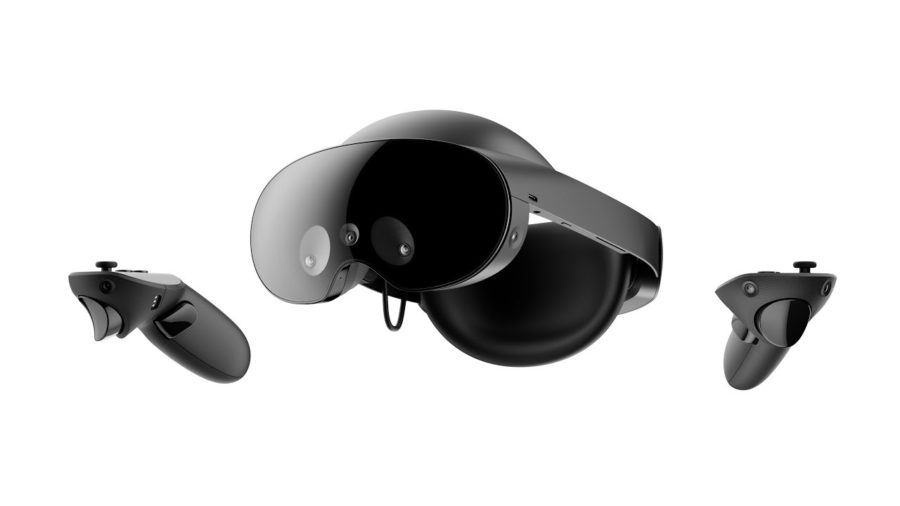
Full-color mixed reality on Meta Quest Pro
Meta Quest Pro has an all-new sensor architecture with high-res outward-facing cameras that capture 4X the pixels as Meta Quest 2’s external cameras, allowing for a high-definition, full-color mixed reality experience. Unlike the black and white passthrough mode on the Quest 2, the Quest Pro allows users to view their physical environment in full color. The device’s stereoscopic mixed reality Passthrough combines multiple sensor views to create a natural view of the world in 3D. Meta stated that compared to monoscopic passthrough solutions, this results in a higher quality and more comfortable experience with better depth perception and fewer visual distortions for both close-up and room-scale mixed reality scenarios.
Ultimately, mixed reality on the Meta Quest Pro will allow users to combine their physical environment with virtual elements in a realistic way – something that the company is hoping will lead to enhanced social presence, productivity, and collaboration for users.
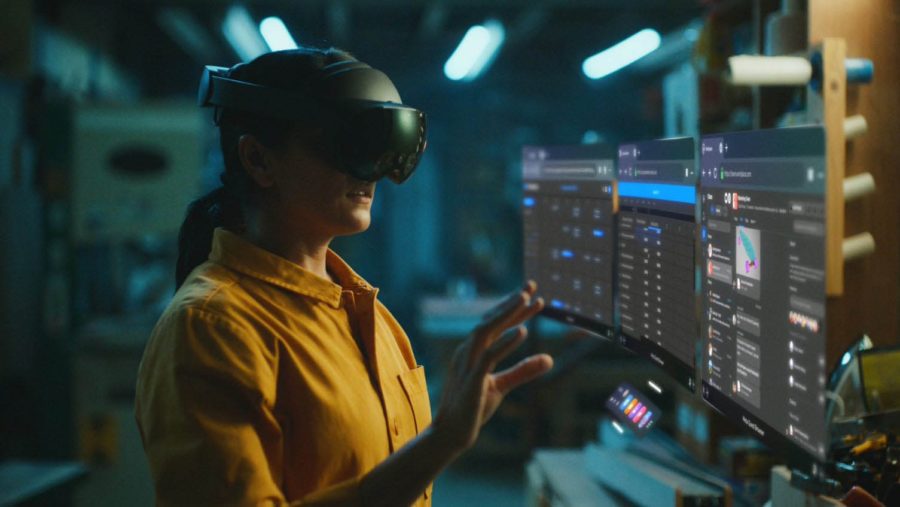
Meta Quest Pro’s new design
Meta stated that the Quest Pro is the slimmest and most balanced VR device it has ever made. This is mainly thanks to the pancake lenses and a curved-cell battery that sits at the back of the headset. The device features a continuous lens spacing adjustment mechanism that accommodates inter-pupillary distances (IPDs) between 55mm and 75mm. The headset also allows users to adjust the lens distance from their eyes with a new eye relief dial to optimize fit, face tracking, and viewing experience.
Most notably though, the Meta Quest Pro is designed with an open periphery, letting users use their peripheral vision to stay present in their surrounding environment and multitask between the real and virtual worlds. However, for increased immersion, the device comes with some magnetic snap-on partial light blockers. For a more traditional VR experience, Meta is also offering full light blocker attachments, which will be released later this year (and cost extra).
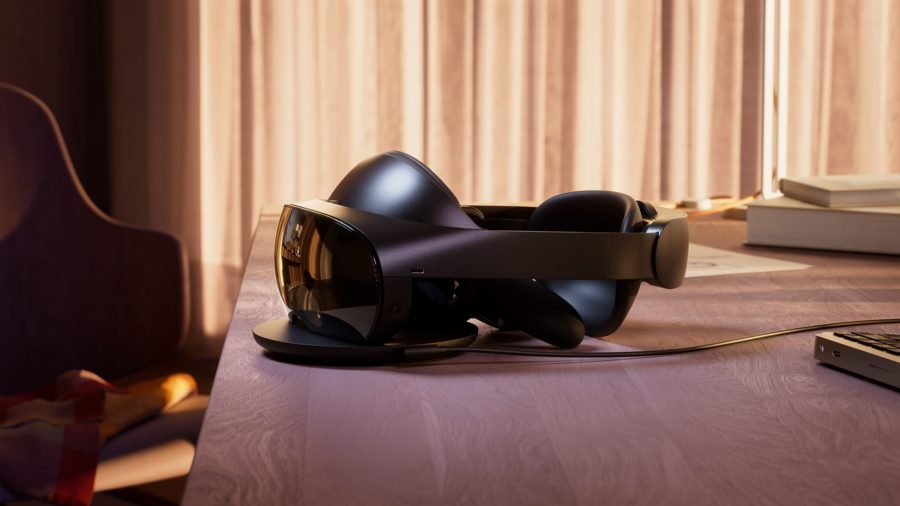
Meta Quest Touch Pro controllers
The brand new Meta Quest Touch Pro controllers come with a major new feature: Three built-in sensors in each controller track their position in 3D space independent of the headset, giving users a full 360-degree range of motion and ensuring stable tracking across VR apps.
The controllers have been re-engineered to be more ergonomic and balanced, and come with upgraded haptics using Meta’s new TruTouch Haptics system, which provides a wider and more precise range of feedback, as well as rechargeable batteries. A charging dock and 45W USB-C power adapter are included with the Meta Quest Pro.
Furthermore, the Touch Pro controllers can also be used with Meta Quest 2 and standalone pairs can be purchased for USD $299.99 starting later this year, according to Meta.
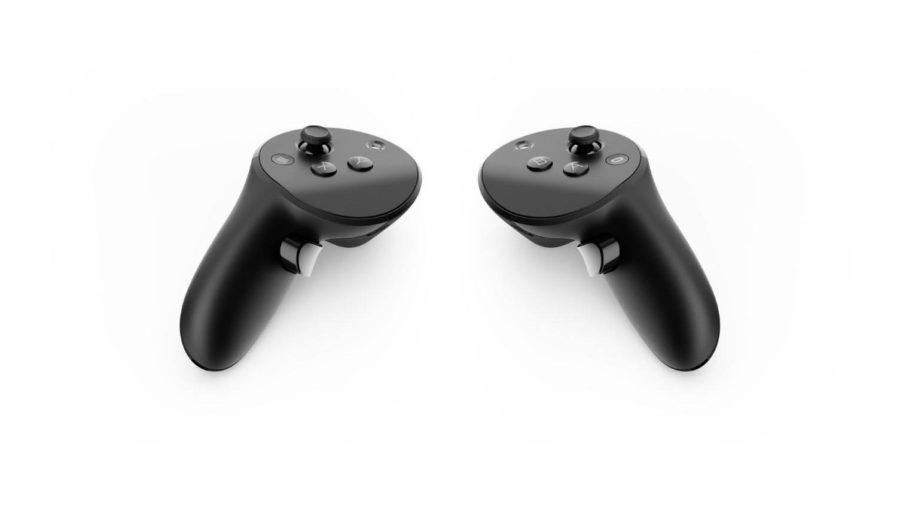
More Natural Facial Expressions for avatars on Meta Quest Pro
With eye tracking and Natural Facial Expressions, Meta is hoping that the Quest Pro will bring users a step closer to showing their authentic selves in the metaverse. From a privacy standpoint, the company noted that both eye tracking and Natural Facial Expressions are off by default. If turned on, images of the user’s eyes and face stay on the headset, are deleted after processing, and are never shared with Meta or third-party apps. For more information on the Quest Pro’s privacy controls, click here.
Meta anticipates that social experiences on the Meta Quest Pro will only get better over time as more developers build apps that support the features with Presence Platform’s Movement SDK, which the company has also launched today.
Meta Quest Pro accessories
In addition to a new headset and controllers, Meta has also announced that pre-orders are now open for a variety of related accessories for the Meta Quest Pro:
- Meta Quest Pro Compact Charging Dock (USD $79.99, out October 25): This two-in-one dock charges the Touch Pro controllers and any Meta Quest headset with a USB-C connection. A 45W USB-C power adapter is included;
- Meta Quest Pro Full Light Blocker (USD $49.99, out November 22): A full light-blocking facial interface that attaches to Meta Quest Pro for a more immersive experience.
- Meta Quest Pro VR Earphones (USD $49.99, out October 25): Designed to tune out background noise and enable a high-fidelity audio experience. Works with the light blocking accessories in place. Separate right and left earphones can connect to either side of the headset to prevent cables from crossing over one another in a user’s field of view;
- Meta Quest Pro Carry Case from Incase (USD $119.95, out October 25): A custom-fit inner shell with interior pockets to securely store the Meta Quest Pro and accessories with a lightweight outer shell for protection.
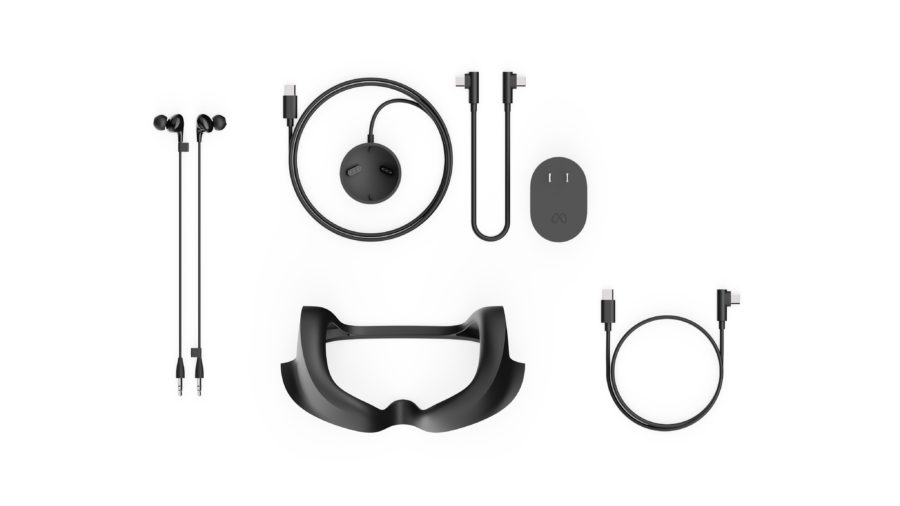
What will happen to Meta Quest 2?
Meta stated that its other Quest devices will continue to exist alongside the Meta Quest Pro as an accessible entry point for VR. There is also still a lot of content and updates planned for Meta Quest 2. The Meta Quest Pro is backwards compatible with the Meta Quest 2 catalog however, meaning users can enjoy their existing Quest 2 immersive games and entertainment experiences on the Quest Pro should they choose. The company did note that moving forward, some apps will have certain features like Natural Face Expressions that are only compatible with the new headset though.
Meta added that eventually, the use cases that catch on with Meta Quest Pro will help inform what features and content the company decides to add to its entry-level line of headsets, with the two product lines complementing one another.
Meta is offering in person demos of the Meta Quest Pro at its store in Burlingame, California. The company also stated that demos will be available in select locations for the following retailers: Best Buy in the US, Currys in the UK, and FNAC and Boulanger in France. To find a demo near you, click here.
Image / video credit: Meta / YouTube
About the author
Sam Sprigg
Sam is the Founder and Managing Editor of Auganix. With a background in research and report writing, he has been covering XR industry news for the past seven years.




